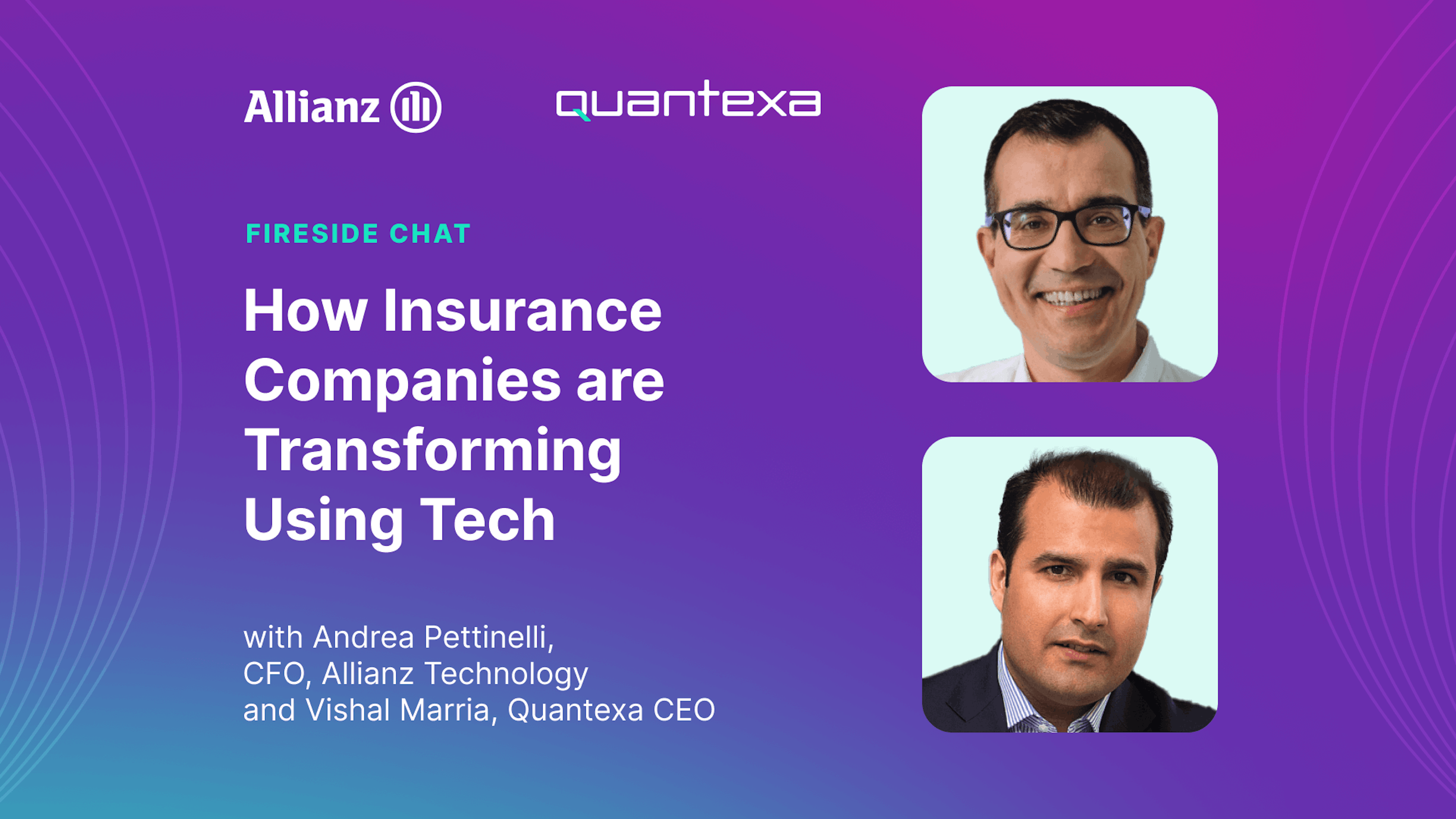The Key to Surfacing and Stopping Insurance Fraud Is Decision Intelligence
By unlocking the power within disconnected data, carriers and insurance firms can prevent fraud, protect customers, reduce friction, and increase revenues.
Faked deaths, staged car crashes, self-inflicted wounds, surgeries performed without medical justification, the theft or destruction of one’s own property, and actual murder — these are but a few examples of the scams and downright heinous crimes that insurance fraudsters have committed in their quest to reap ill-gotten gains. In our digital era, new threats are emerging, from the use of deepfake bots to file fraudulent claims to the online theft of individuals’ personal details to enable fraud schemes.
While the full scale of insurance fraud is unknown because much of this activity is undetected and underreported, the amount of the losses that are known are staggering to consider. This stat is oft-cited in industry circles, but that makes it no less compelling: The Coalition Against Insurance Fraud (CAIF) reports that the total financial impact of insurance fraud annually in the U.S. alone is more than $308 billion. And data from the CAIF and Colorado State University Global indicates that the losses from three common fraud types could easily account for nearly half of that figure:
Life insurance fraud ($74.7 billion)
Property and casualty insurance fraud ($45 billion)
Health insurance fraud ($36.3 billion)
The bottom-line impacts of insurance fraud for insurers are clear. But insurance firms can reduce these losses through the strategic use of technology—or more specifically, Decision Intelligence. With a strong data foundation and the right tools to make the most of that data, they can:
Stay on top of new and emerging insurance fraud threats
Safeguard their employees, customers, and business reputation
Protect against internal and third-party threats
Reduce false positives so counter-fraud investigators can focus on real incidents and risks
Decision Intelligence is actionable intelligence that insurers can apply with confidence in their decision-making. As this article explains, they can use Decision Intelligence to flag potentially fraudulent claims more proactively, increase operational efficiency, reduce costs, and more.
But first, let’s take a closer look at what’s keeping insurance executives and their teams awake at night.
Hidden risk exposure is a source of insomnia and headaches for insurers
There’s an old saying, “What you don’t know can’t hurt you.” If only that were true. Insurance executives are haunted by what they don’t know about fraud risk. The inability to create a holistic view of risk across the business is also a source of significant frustration for:
Line of business owners focused on profit and loss statements
Claims executives concerned about the predictability of severity and frequency, as well as rising claim costs from inflation
Underwriting teams nervous about the impact of bad business on combined rations
Customer and risk teams responsible for ensuring the firm has fair customer processes and that fraud prevention requirements are maintained
The lack of insight into fraud risk is also worrisome for insurance executives from a job security standpoint. They know that investors and other key stakeholders are looking squarely at them to find ways to increase the firm’s profitability. But without an accurate and up-to-date enterprise view of risk, and the ability to surface evidence of hidden fraud, they will struggle to protect their firm’s bottom line, let alone enhance it.
One of the most powerful tools insurance leaders can use right now to help boost profits and keep stakeholders satisfied is to reduce claims leakage. That includes:
Reducing mistakes, like the overpayment of claims due to human error
Eliminating inefficient, manual processes that waste time and lead to rework
Preventing costly insurance fraud
No more silos: Decision Intelligence allows insurers to operationalize all their data
Fraud prevention requires insurers to create and maintain complete, contextual views of their customers and their complex networks of relationships. Many insurers look at activity, behaviors, companies, and individuals in isolation, and that prevents them from seeing the bigger picture needed to detect fraud, especially the most collusive and high-impact activity.
Without a 360-degree view, insurers face limitations on what their existing monitoring systems and investigation teams can achieve. The game-changer for generating that view is Decision Intelligence.
According to Gartner, Decision Intelligence improves decision-making by understanding and engineering how decisions are made, and how outcomes are evaluated, managed, and improved by feedback. Decision Intelligence solutions use artificial intelligence (AI) to connect all data from previously siloed and scattered points, internal and external, and create a single trusted and reusable resource.
With Decision Intelligence and the right platform to enable it, insurers can finally bring together and operationalize all their data to develop a richer and more comprehensive understanding of every applicant, customer, claimant, third party, and supplier across the insurance value chain – from underwriting to claims management. They can, in turn, become much more effective at reducing losses from claims leakage and insurance fraud. More than that, they can price policies more accurately, expedite customer profiling, take new products to market faster, accelerate payment decisions, and much more.
How Quantexa’s Decision Intelligence Platform can help insurers build a holistic view of risk
Armed with an enterprise view of risk, insurers are more empowered to expose bad actors and reduce the risk of opportunistic fraud – and organized fraud. If a firm identifies someone who has committed fraud in one of its brands, books of business, or channels, they need to make sure that person does not target another part of the business. They need a full picture of risk to act.
Quantexa provides an enterprise-wide platform for Decision Intelligence that allows insurance companies to unify their data and build the holistic view of risk that’s required to combat insurance fraud. They can verify customer identities quickly and with far greater accuracy. (Insurers that work with Quantexa report 99% match accuracy for a true single view of party.) They can also see customers’ associations with other entities, which enables better risk scoring and fraud detection.
Importantly, Quantexa’s platform allows insurers to expand their use of high-quality data to identify and stop many forms of fraud beyond claims fraud, including internal fraud, supplier fraud, and application fraud. The technology also can be applied to different parts of the claims-decisioning process, such as liability decisioning or recoveries.
We have access to a wealth of data on the industry and on our global customers. But for this data to drive business insights, it must be homogeneous, which is not always the case. Achieving this is an enormous task, which is why we partner with Quantexa. We want happier customers and to ensure the claims we are paying out are accurate in the process.
Andrea Pettinelli
CFO at Allianz Technology
How Allianz Is Transforming Using Technology
While similar solutions might focus on helping to identify first- or third-party claims fraud, Quantexa offers a comprehensive approach to enterprise fraud detection, covering areas from claims, billing, and provider fraud to anti-bribery and corruption. Insurers gain dynamic risk views across the life cycle for all their channels and product lines.
Quantexa’s Decision Intelligence Platform can also significantly reduce false positives. Insurers that have adopted the platform typically see a reduction of 75% or more in false positive alerts, compared with existing in-house or third-party solutions.
Other benefits that Quantexa provides to insurers include the following:
The ability to make proactive decisions to get ahead of fraud
Speed is essential when trying to stop fraud, but so too is confidence in the accuracy of the data that’s signaling potential criminal activity. Quantexa provides insurers with both, including early warnings that help them take a risk-based approach to detection and alert prioritization. The advanced analytical capabilities from Quantexa alert against key fraud typologies in real time. This empowers insurers to make trusted decisions in seconds – and enable Straight-Through-Processing (STP).
More control over data
Quantexa’s solution allows data to be kept internally. That means insurers can reduce the risk of costly data leakage that can occur when data is sent outside the organization.
Increased agility and buildability
Because insurers have more control over their data with Quantexa, they can use the best-of-breed capabilities in the platform to build out the models they need while maintaining the agility to change them as the insurance landscape and their business evolves. Quantexa is the only Decision Intelligence solution to support this and offer a high level of “evolvability.”
Another benefit of working with Quantexa is that insurers don’t need to worry about “vendor lock” constraints that can cause them to react too slowly to changes in the fraud risk landscape. When an insurer takes new products to market, acquires a new brand, or changes how they interact with a client, it can fundamentally change their risk exposure to fraud.
Quantexa gives insurers completely open detection models that have been informed by historical fraud behaviors. Insurance firms can use their other tools and existing analytics processes along with Quantexa for further exploration – and to stay ahead of fraud.
A counter-fraud solution that’s far from traditional
Insurance fraud is rampant – and it’s constantly changing. Bad actors are always adapting and innovating their tactics to evade traditional investigative techniques as well as technology-enabled monitoring and detection methods. Recent trends in insurance fraud, to name only a few examples, include:
Induced and stage incidents: Deliberately causing an accident, including road traffic collisions for the purpose of financial gain
Ghost broking: Selling and issuing forged or invalid discounted insurance policies
Collusive supplier behavior: Conspiring with vendors to gain unfair benefits
Stolen personal details: Fraudsters obtain personal and financial details to exploit unsuspecting victims
Emerging digital threats: The metaverse, deep fakes, bots, or synthetic media can effective be used to file fraudulent claims, create fraudulent inspection reports, and even establish eh existence and condition of assets that do not exist
Quantexa's Decision Intelligence platform helps us surface fraud and reduce claims leakage. Importantly, by bringing previously undisclosed conflicts to light, Quantexa allows us to connect the dots on organized crime networks like no other tool we have.
Peter Hazlewood
Group Security Officer, Prudential
Insurers across the globe are protecting their businesses and customers more effectively from these and many other types of fraud by using Quantexa’s Decision Intelligence Platform. It helps them to improve decision model accuracy and automation and implement robust risk and fraud controls across the entire insurance value chain.
Insurers that work with Quantexa are also reducing operational costs and growing their revenue. For example, these firms have seen fraud conversion and savings of more than $3 billion globally by using our solutions. (One insurer reports $100 million in incremental fraud reduction savings annually.)
They’re also finding up to 2x more fraud than before, including previously hidden risks. And they’re using contextual analytics to uncover the highest-risk behaviors like organized fraud, facilitation, collusion, and bribery.
Insurers that use Quantexa’s Decision Intelligence Platform have also realized:
70% improvement in fraud impact and doubling of complex cases set up
90% accurate automation of claims approved – including $100 million of claims leakage avoidance
30x faster customer profiling and risk assessment across underwriting and claims
The context that Quantexa’s platform provides for decision-making and investigations is also saving insurers between 1% and 3% on their total claims spend through improved fraud identification. Another bottom-line advantage is that insurers can use the Quantexa platform in multiple ways, but they only need to invest in the platform once.
Plus, Quantexa’s Decision Intelligence Platform can keep evolving to meet future needs. It’s a solution designed to grow and change right along with an insurer’s business. Global insurers that have deployed the platform within their existing technology ecosystem are identifying more risk and opportunity, seeing fewer false positives, and realizing a high return on their investment.
With Decision Intelligence comes a true view of risk – and a lot less friction
Many insurers have already realized that the capabilities of Quantexa’s Decision Intelligence Platform are vital tools for surfacing and stopping insurance fraud. They are optimizing the claims journey for good customers. And they are enhancing the overall customer experience through more accurate insights that accelerate decision-making and enable STP.
When issues do arise, they can resolve them faster. In fact, insurers that have adopted Quantexa’s platform have seen an 80% reduction in investigation time.
Decision Intelligence allows insurers to develop a true view of risk – including hidden risks – and identify opportunities to ease customer friction, create more benefits for customers, and increase customer value and premium income growth. The continuous stream of relevant insights that Quantexa provides lets insurers maximize the value of their data assets, creating a competitive advantage that puts them on the path to higher profitability. Plus, it helps their executives sleep better at night.




